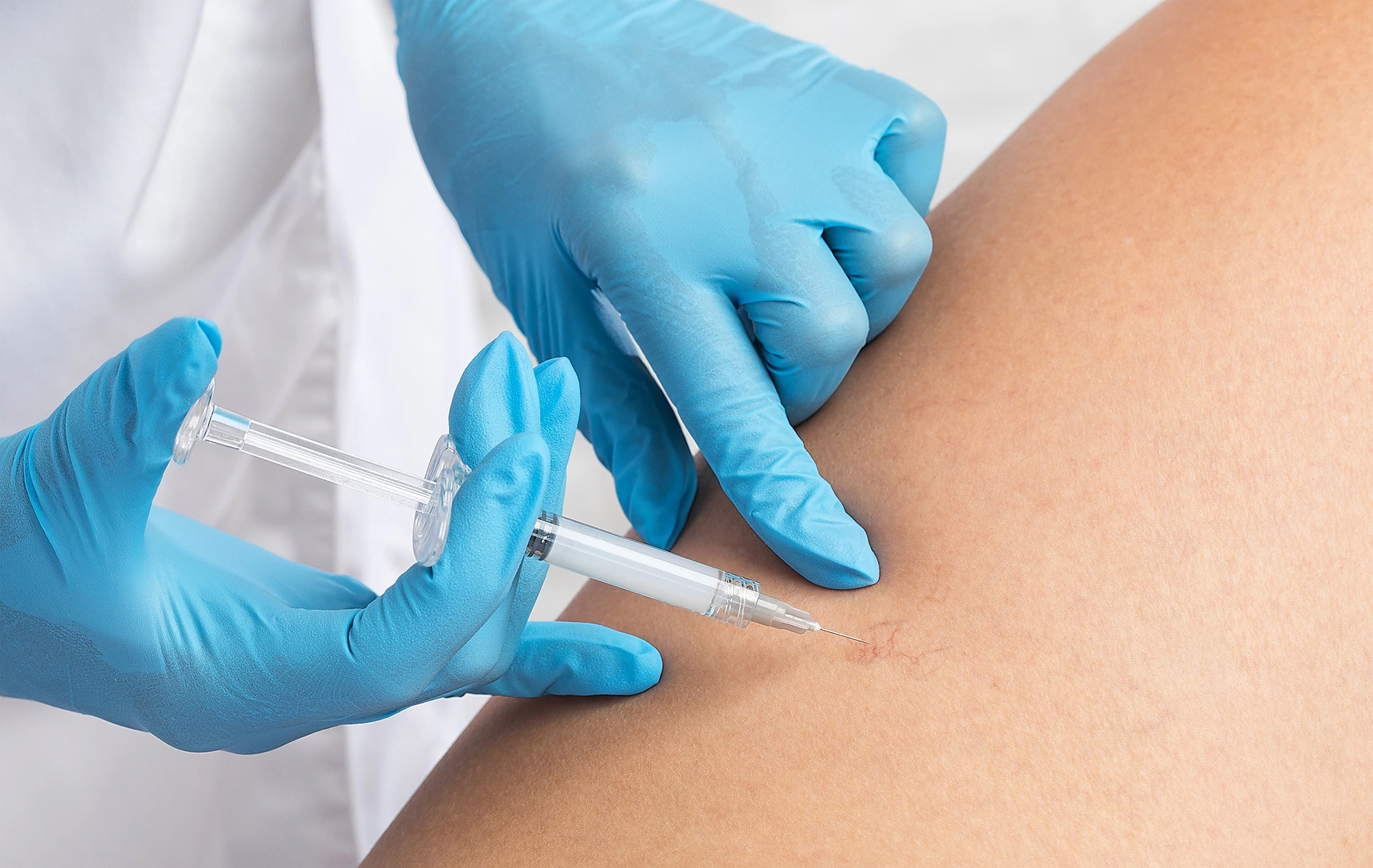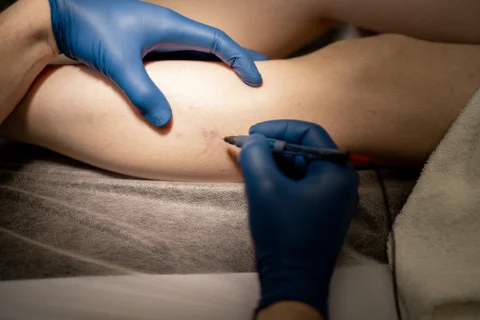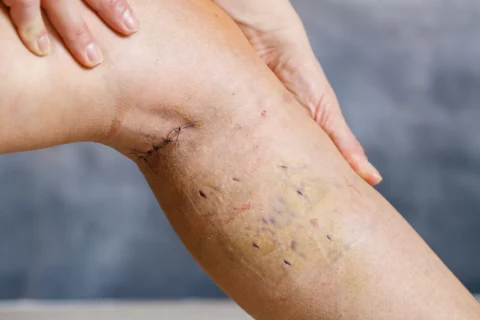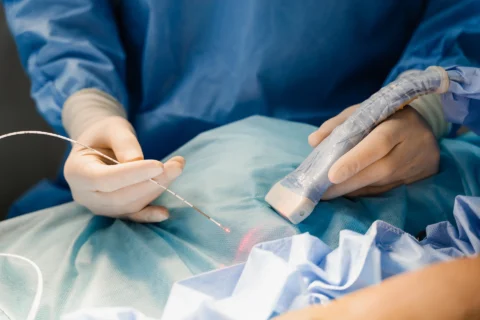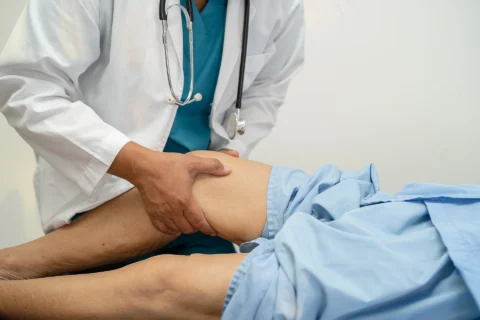Chronic venous insufficiency (CVI) is a common condition in the United States. In fact, a 2014 study revealed that 150,000 new patients are diagnosed with it yearly. It is caused when leg veins or other veins are damaged and unable to effectively pump blood to the heart.
So what are reasons for not seeking treatment for CVI? While there is no confirmed method for reversing the condition, it’s possible to live comfortably with the symptoms through pursuing a healthy lifestyle and non-invasive treatment. However, if the condition still develops, surgical intervention must be done to avoid further damage to the veins.
When Should I Worry About Chronic Venous Insufficiency?
You can circumvent the symptoms of chronic venous insufficiency in its early stages through healthy habits and non-invasive means, but you need surgical treatment if these methods are not responsive.
What Are the Most Urgent Symptoms of Chronic Venous Insufficiency?
According to the 2020 CEAP classification system, CVI can be divided into five stages based on the current symptoms:
- C0—no visible signs of CVI
- C1—Reticular veins and spider veins will be noticable
- C2—Varicose veins will appear
- C3—Edema, or swelling, in the legs
- C4—Your skins changes to a leathery color and texture
- C5—Healed legs ulcers: closed, painful sores
- C6—Active venous ulcers: frequent open sores
Doctors will diagnose CVI around stages C0 and C3 and recommend lifestyle changes and physical therapy to prevent it from moving to the further stages.
How Does Chronic Venous Insufficiency Lead to Severe Conditions?
Without vascular surgery or significant changes to your lifestyle, CVI may develop into deep vein thrombosis — a vein disease when a blood clot forms in the leg. If the blood clot travels to the heart or the lungs, it will prevent any blood from flowing causing a potentially fatal pulmonary embolism.
Treatments Available for Chronic Venous Insufficiency at Vein Center Doctor
At Vein Center Doctor, we are equipped with state-of-the-art surgical equipment and updated with the most recent clinical practice guidelines to provide the best outpatient vein treatments possible.
Our dedicated and compassionate staff will ensure that the procedure is done safely and securely to lessen any side effects that may happen afterward. We offer effective treatment options for chronic vein insufficiency including radiofrequency ablation, endovenous laser treatment, and sclerotherapy.
1) Radiofrequency Ablation
Radiofrequency ablation is a minimally invasive, FDA-approved operation that will close off inadequate vein valves to allow blood to flow into healther veins. It involves inserting a catheter — a thin flexible tube — into the leg, which will then emit heat to seal the diseased vein. A compression bandage or compression stockings will be placed in the affected area to prevent any bruising.
This procedure uses local anesthesia so the patient can immediately return to their daily life However, patients who have a vein diameter of less than 2 millimeters, are pregnant, or have a history of deep vein thrombosis cannot proceed with this treatment.
2) Endovenous Laser Treatment
This procedure also involves the application of heat and local anesthesia for a seamless and efficient treatment. However, instead of the catheter discharging heat, a laser fiber between a 810-nanometer or 940-nanometer diode will be inserted into the veins through the catheter and send a small beam of heat to shrink it.
A 2017 study showed that endovenous laser treatment is 20% more satisfactory than radiofrequency ablation when patients underwent both operations on each leg. It also revealed that endovenous laser treatment has lesser chances of side effects such as bruising, skin discoloration, and swelling.
3) Sclerotherapy
Sclerotherapy injects sclerosing agents—such as hypertonic solutions of sodium, sodium tetradecyl sulfate, and sodium iodine—in the affected vein to induce inflammation in the damaged vein to prevent blood from flowing through it. After the vein has scarred, the body will assimilate it to itself.
This operation is suitable for smaller varicose veins in the early stages of chronic venous insufficiency. There are two types of sclerotherapy: liquid sclerotherapy and ultrasound-guided foam sclerotherapy. The latter is the most efficacious yet painful of the two but they share the same side effects of swelling, skin discoloration, and stinging.
Other Treatments for Chronic Venous Insufficiency
Surgery is not the only option to alleviate CVI. There are non-invasive treatments under conversative therapy that focus on containting and isolating its symptoms to prevent any further ailments from appearing. These treatments Include skin care and exercise therapy.
1) Skincare
The later stages of CVI will cause apparent skin damage in the form of infections and swelling such as appearance of a venous ulcer, varicose eczemas, lichenification, and cellulitis due to venous stasis dermatitis. Skincare applies aggressive moisturization through topical moisturizers to keep the skin hydrated, tender, and resilient to these skin conditions.
2) Exercise Therapy
Exercise is an effective way to manage CVI as it promotes blood circulation and vein health. As a conversative management strategy, exercise therapy will target the buildup and reconstitution of calf muscles and other areas in the lower leg to gradually increase the overall blood flow in these areas.
Ways to Maintain Health and Prevent Severe Conditions With Chronic Venous Insufficiency

An early diagnosis is crucial to assess the current stage of your chronic venous insufficiency symptoms. If it’s within stage C0 and C2, adjusting your lifestyle choices will suppress the effect of the symptoms and forestall the necessity of surgical treatment. These steps may also lower the visibility of any varicose vein and spider vein in the legs.
1) Maintain a Normal Weight Through Daily Exercise
Daily exercise will promote good blood flow because the heart will pump more blood throughout the body, preventing further chronic venous disease. A sedentary lifestyle increases the development of chronic venous insufficiency as the blood will remain stuck in your legs. It will also result in adding weight to the body which will further dissuade physical activity. Consult a doctor if exercising is painful in the legs.
2) Hydrate Frequently and Avoid Salty Foods
Drinking water, especially in warmer temperatures, will increase blood flow by expanding the veins and regulating blood pressure. Frequent hydration can also prevent blood clots from forming and heal wounds and sores like ulcers faster.
3) Quit Smoking
A smoking habit will exacerbate the worst symptoms of chronic venous insufficiency: blood clots, vasoconstriction, and increased varicose veins—placing further risk of developing other chronic venous disease and heart disease. A progressive withdrawal from smoking will instantly see benefits for your blood flow.
4) Avoid Wearing Tight Clothing Around the Legs
Tight clothing around the legs like skinny jeans will restrict or even cut off blood flow in the legs and increase the development and effects of CVI symptoms. High heels and tight socks will do the same for the ankles and feet. Clothing that is designed to induce blood pressure such as compression stockings should be worn with a doctor’s prescription.
Get Expert Outpatient Vein Care at Vein Center Doctor

It’s difficult to live with chronic venous insufficiency but it is not impossible. Following these steps will ensure you will not develop dangerous vein diseases. Though if you need a healthcare provider or a vein clinic to aid you with your vein conditions, you don’t need to look any further.
At Vein Center Doctor, we can recommend the best chronic venous insufficiency treatment for your overall condition. Our expert team of vein specialists, led by Dr. Rahul Sood, are updated with the leading technology and knowledge to take on any venous disease. Schedule a free consultation with us today.

